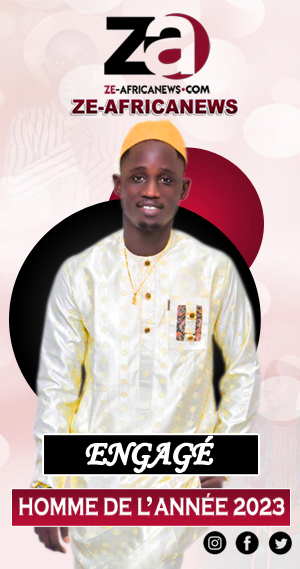Aminata Traore, better known by her pen name Hamitraore is the author of two novels. LE COUTEAU BRULANT published in 2012 by Frat-Mat Édition and CACHEE DERRIERE LE MUR, published in 2016 by Éditions Harmattan. After graduate studies in modern literature, Hamitraoré turned to humanitarian work by working with national and international non-governmental organizations. She is now president of the GNITRESOR Foundation, which aims to mobilize resources to organize conferences in schools around the concept “the book as a means of raising awareness”. Our guest is very involved in the fight against FGM.
Ze-Africanews.com: Your first work, The burning knife, has as its theme, excision. A practice of which you have been victim, as more than 38% of Ivorian women in 2016, according to the figures of the Minister for the Advancement of Women, the family and the protection of the child. How can we explain this percentage, despite all the awareness campaigns?
Aminata Traore: Changes in mentality are always in the long term. Of course, the percentage is alarming, but we must welcome all the initiatives of the Ministry of Women and Child Protection, the United Nations system and national and international NGOs aimed at putting an end to this practice. Today, excision is no longer a taboo subject. The communities organized knife deposit ceremonies with information and training received on the practice. Let’s stay optimistic, I know that by 2020 we will get there.

You yourself have been a victim of this practice. What made you decide to tell your experience in your book, the burning knife?
I used to say that I am not proud to be a victim but I am proud to have had the courage to break the wall of silence. To break the silence by testifying is a great beginning of healing. In publishing this work, I wanted to share my pain, my revolt and my hope. And if this testimony can save would be only a girl, I would have won a battle. This work plunges us into the universe of female genital mutilation, that is, before, during and after this practice. I reviewed the psychological and physical consequences. I invite everyone to read “the burning knife”.
You do not just describe, you also go to meet people, especially students, to raise awareness
Children should also be given the opportunity to be the most affected by the practice?
If students are informed, they can stimulate discussion within the school and their families and become peer educators. Through the foundation and support of the partners, we were able to organize conferences and donate copies of the novel “the burning knife” to the libraries of the institutions visited.

What do you think of the government’s decision to go into repression with the effective implementation of the law banning female genital mutilation? Do you believe that this could help to more effectively combat this practice?
The law against the practice has been voted since 1998 but it was not until 2012 to see the first convictions. I am for repression. It is also a deterrent. But first of all, mass and outreach awareness must be intensified. Involve the print media, community and religious leaders. If everyone plays his part, I believe that we will put an end to this practice.















































